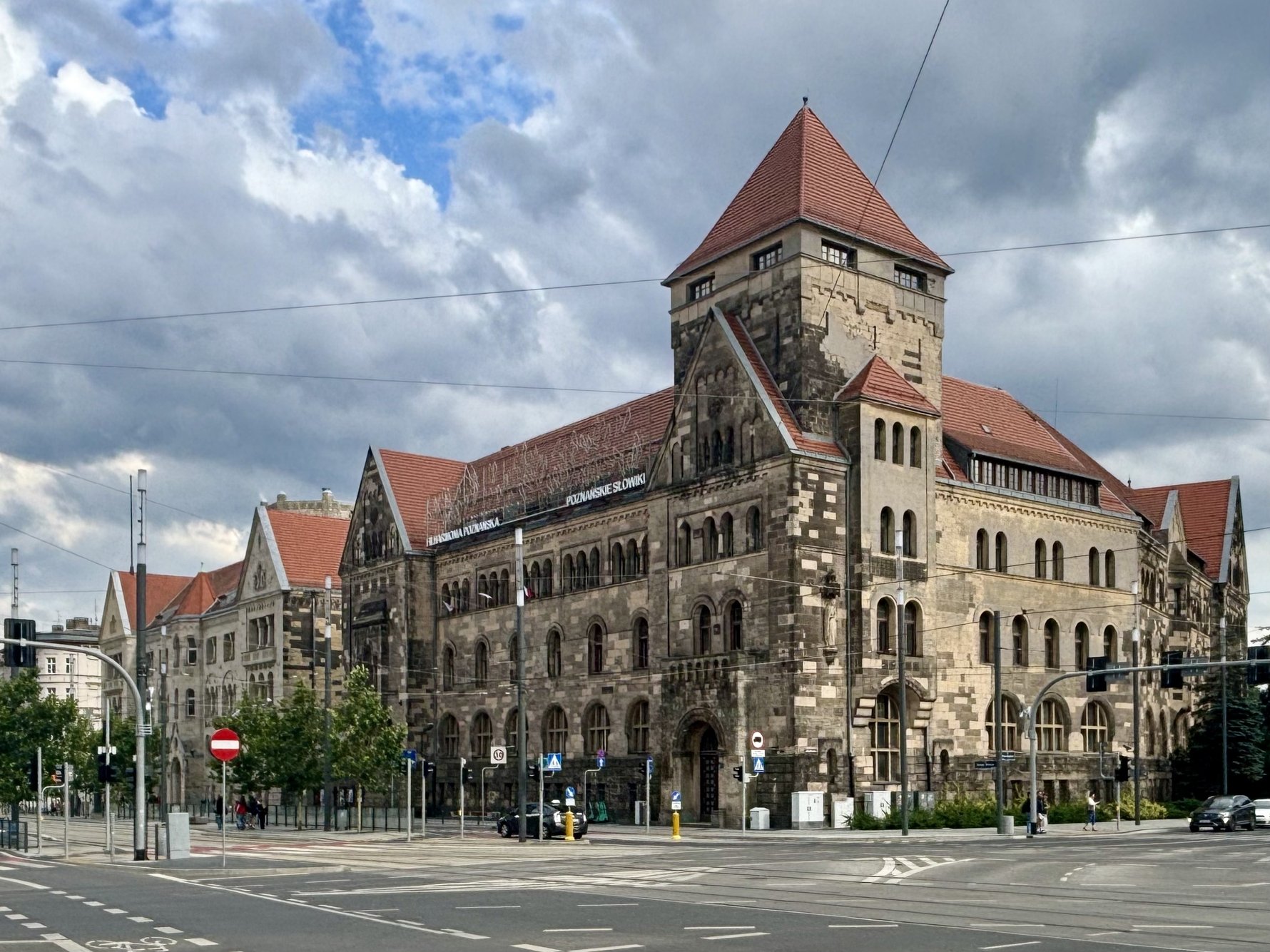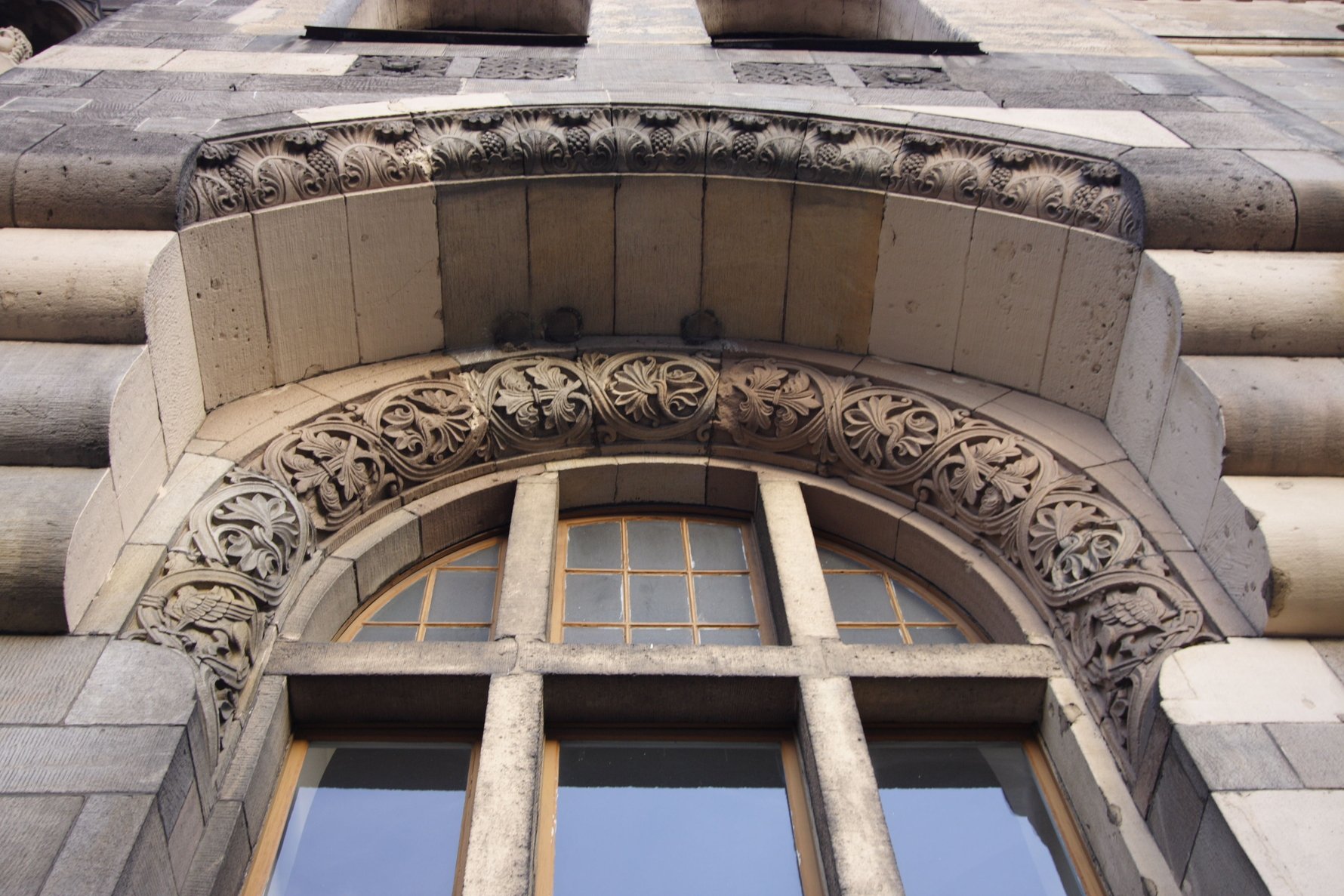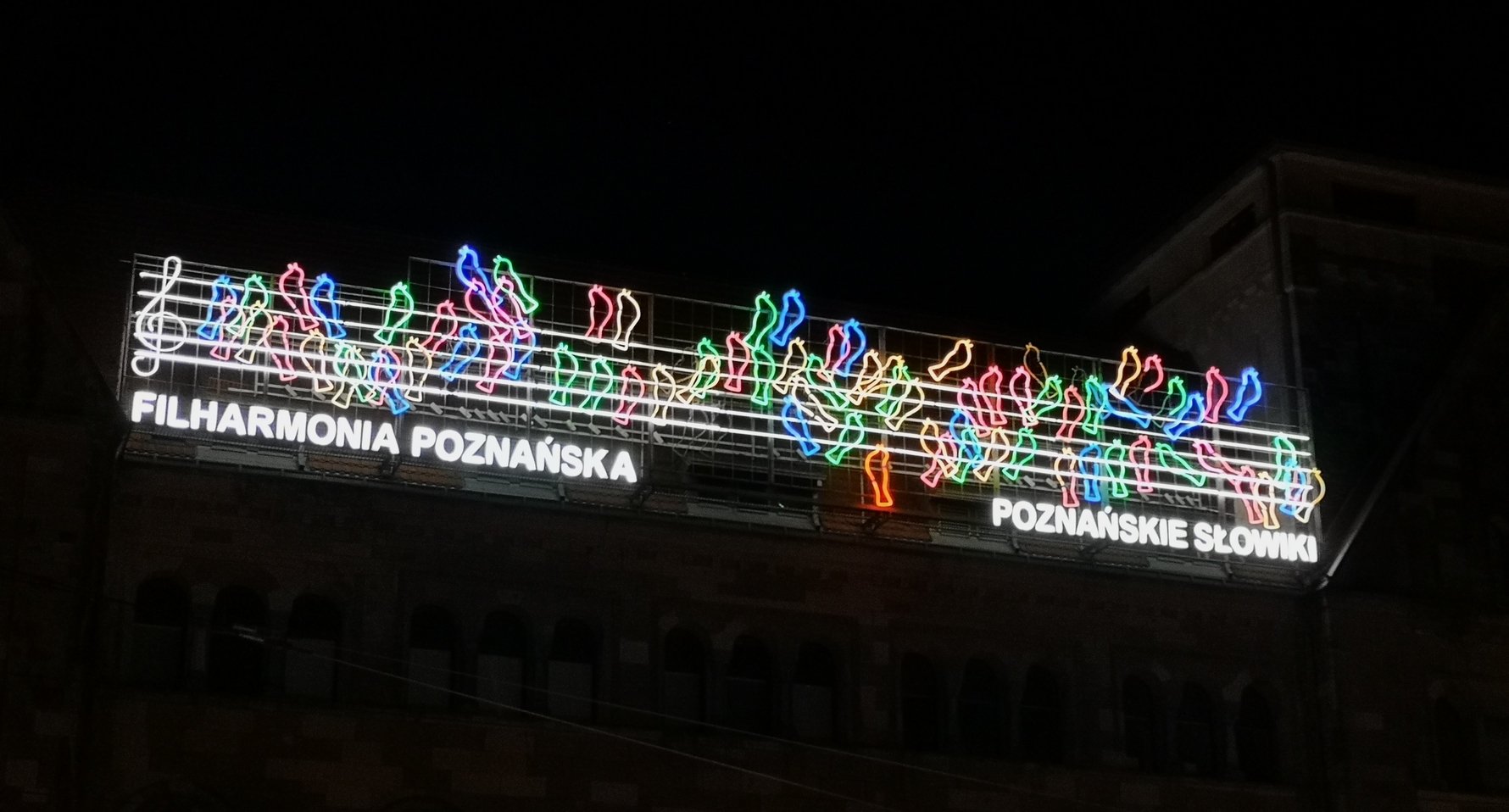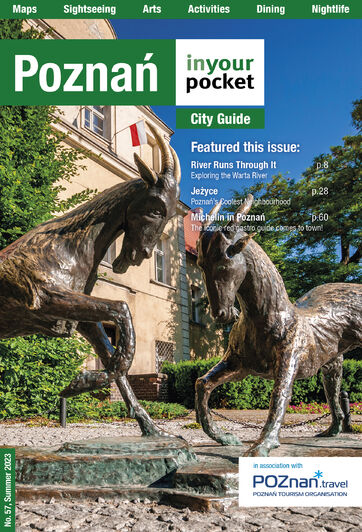
Ironically, the Land Credit Society (Ziemstwo Kredytowe) was originally established in 1821 by Polish landowners seeking to maintain economic autonomy under Prussian rule. By the time this grand new headquarters was erected, however, Prussian authorities had largely restructured the institution into a tool of Germanisation, working hand-in-hand with the Colonisation Commission to facilitate the transfer of land from Polish to German hands.

Today, the building houses the offices of the Poznań Philharmonic, established in 1931, which actually uses the Aula at Collegium Minus as its primary concert hall. After dark, the façade is illuminated by a splendid neon installation featuring a treble clef and a series of brightly coloured birds playfully fluttering along a five-line musical staff. Installed in 1974, this animated artwork honours the Poznań Nightingales (Poznańskie Słowiki) - a celebrated men’s and boys’ choir founded in 1939 by 19-year-old Stefan Stuligrosz. The choir gained renown for its clandestine performances during the Nazi occupation and was formally embraced by the Philharmonic after the war, with Stuligrosz serving as its artistic director until his death in 2012. Today the ensemble continues to perform internationally, with nearly 100 active members.




Comments